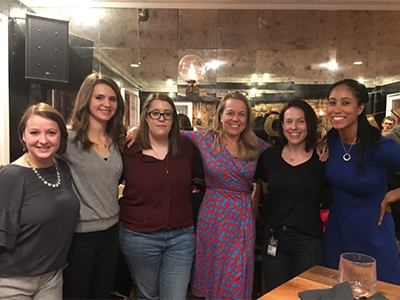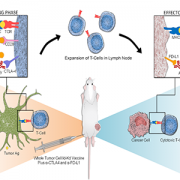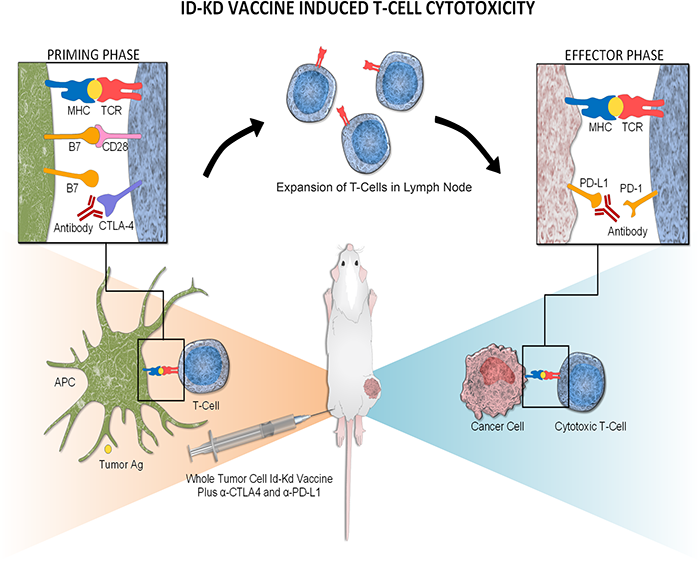Catherine Bollard, M.D., awarded two notable recognitions

Dr. Catherine Bollard and some of her mentees.
For her work on developing cell-based therapies and dedication to her trainees, Catherine Bollard, M.D., MBChB, director of the Center for Cancer and Immunology Research at Children’s National hospital, receives two outstanding awards in her field.
Celebrating the minds behind the architecture of modern medicine and influencing the drug industry, The Medicine Maker, through an international panel of judges, added Dr. Bollard to the 2021 Power List in the category of advanced medicine.
Dr. Bollard mentioned that it is encouraging to see mRNA vaccine technology successfully fighting the COVID-19 pandemic because it paves the way for cancer vaccine advancements. Still, there are challenges affecting drug development. The centralized manufacturing hinders the large-scale production of patient-specific products as more cell therapies are getting approval, she added.
“Looking to the future, cell-based therapies will not be sustainable with a purely patient-specific centralized manufacturing model and, therefore, the field must move into the development of off-the-shelf cell therapies,” said Dr. Bollard. “The success of off-the-shelf virus-specific T-cells is especially exciting because it has the potential to be the platform for other antigen-specific and CAR-T cell therapies.”
A global society of clinicians, researchers, regulators, technologists and industry partners, The International Society for Cell & Gene Therapy (ISCT), will bestow Dr. Bollard the 2021 ISCT Darwin J. Prockop Mentoring Award on May 26. Her ongoing commitment to mentorship has advanced the careers of many aspiring professionals that have worked alongside her. The ISCT Award Committee selected someone that can inspire the current and future growing workforce. Dr. Bollard is highly recognized across the industry for her leadership, passion and dedication to her mentees, and her extraordinary efforts to advance their skills, capabilities and opportunities.

To Patrick Hanley, Ph.D., chief and director of the Cellular Therapy Program at Children’s National, Dr. Bollard is the most deserving mentor for this award. She has provided advice and guidance to over 93 individuals, including 22 junior faculty, 27 post-doctoral fellows and 12 graduate students. Dr. Bollard also acts as a mentor to other senior investigators at Children’s National, particularly those in the Bone Marrow Transplantation division.
“For the past 15 years, Cath has been a strong mentor, friend, advocate, and voice of reason for me and has been instrumental in my success, both at Baylor College of Medicine and now at Children’s National,” said Hanley. “With her support and mentorship, I have been fortunate to publish high impact papers, earn a number of awards and receive prestigious grants. Without her guidance this wouldn’t have been possible.”
Amy Hont, M.D., oncologist for the Center for Cancer and Immunology Research at Children’s National, mentioned that Dr. Bollard is endlessly dedicated to her mentees and staff. “Dr. Bollard has been incredibly supportive of my research career throughout my training and progression to faculty. I feel very fortunate that I have been able to benefit not only from her unparalleled knowledge and expertise, but also her career advice and resources.”
Dr. Bollard leads clinical and research efforts to fight cancer and other inflammatory diseases by strengthening the immune system using adoptive cell therapy. She is a former president of the International Society of Cellular Therapy, and the current president of the Foundation for the Accreditation for Cellular Therapy (FACT). As a distinguished hematologist, immunologist and immunotherapist, she is working to develop cell and gene therapies for patients with cancer, viral infections and immune mediated diseases. She is especially interested in bone marrow and cord blood transplantation and improving outcomes after such transplant by decreasing infectious complications and preventing relapse. Dr. Bollard also has a specific interest in targeting viral infections in immune-suppressed patient populations, including individuals living with the human immunodeficiency virus.





